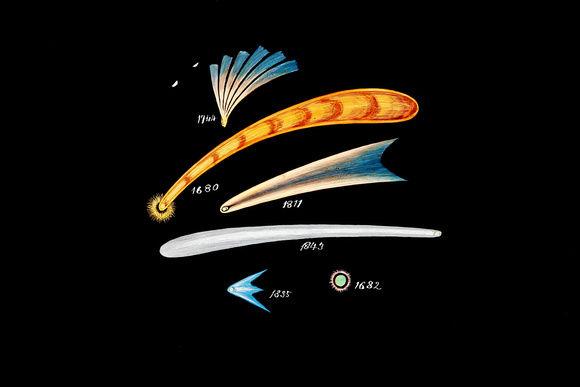Slide No. 14 - Appearance of different Comets
The Great Comets
1680 - C/1680 V1, also called the Great Comet of 1680, Kirch's Comet, and Newton's Comet, has the distinction of being the first comet discovered by telescope
1682 - Halley's Comet or Comet Halley, officially designated 1P/Halley, is the best-known of the short-period comets and is visible from Earth every 75–76 years
1744 - The Great Comet of 1744, whose official designation is C/1743 X1, and which is also known as Comet de Chéseaux or Comet Klinkenberg-Chéseaux, was a spectacular comet that was observed during 1743 and 1744
1811 - The Great Comet of 1811, formally designated C/1811 F1, is a comet that was visible to the naked eye for around 260 days, a record it held until the appearance of Comet Hale-Bopp in 1997. In October 1811, at its brightest, it displayed an apparent magnitude of 0, with an easily visible coma.
1835 - Halley's Comet or Comet Halley, officially designated 1P/Halley, is the best-known of the short-period comets and is visible from Earth every 75–76 years
1843 - The Great Comet of 1843 formally designated C/1843 D1 and 1843 I, was a long-period comet which became very bright in March 1843 (it is also known as the Great March Comet)
Above descriptions from http://en.wikipedia.org/wiki/


